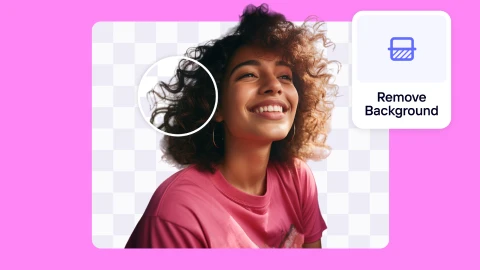50 AI product photography statistics and trends for 2026
The AI product photography market is projected to reach USD 8.9 billion by 2034, with a CAGR of 15.7%: these numbers clearly explain why AI is no longer a nice-to-have feature inside creative tools. It is becoming an operational layer across e-commerce, retail, and online marketplaces, where product visuals determine performance, conversion, and brand trust.
In 2025, AI-powered product photography workflows have become one of the fastest-maturing use cases, adopted by everyone from small sellers to large global enterprises.
Businesses are turning to AI not just to improve images but to produce, update, and scale product visuals faster than traditional photography ever allowed. Background removal, bulk editing, generative lifestyle scenes, automated retouching, and multi-platform formatting are now part of a single end-to-end workflow.
This article provides an updated overview of the macro AI market, the AI image editing and generation segments, and the adoption trends shaping 2026 and beyond. All statistics come from verifiable, publicly accessible sources and reflect the most recent available data.
Top AI product photography statistics for 2026
AI product photo editing and photography is reshaping brands’ creativity and workflows and show that we’re past early adoption and into full adoption.
Global AI market size
According to Grand View Research:
The global AI market reached USD 196.63 billion in 2023.
It grew to USD 279.2 billion in 2024.
It is projected to reach USD 1.81 trillion by 2030, with a CAGR of 37.3% from 2023 to 2030.
These figures confirm continued, long-term acceleration rather than short-term hype.
Regional distribution
Summaries of the same Grand View Research dataset show:
North America remains the largest regional AI market, accounting for over 36% of global revenue.
Analysts expect the United States to remain the largest national AI market through 2026–2030 due to leadership in AI chip production (NVIDIA), cloud infrastructure (AWS, Azure, Google Cloud), and enterprise adoption.
Additional industry forecasts estimate:
The US AI market may approach USD 300 billion by 2026.
Generative AI market
Generative AI remains the fastest-growing part of the AI ecosystem:
Valued at USD 66.6 billion in 2023
Expected to reach USD 207 billion by 2030
AI software & hardware revenue
Across software and hardware:
The global AI software market generated ~USD 100 billion in 2024.
AI-enabled mobile and desktop apps are projected to generate USD 18.8 billion by 2028.
AI chip revenue is expected to reach USD 83.25 billion by 2027.
Enterprise adoption
90% of executives say AI is a top business priority according to MIT Sloan
40% projected productivity improvement from AI, according to PWC.
The macro market is expanding quickly, and image workflows sit at the intersection of software, generative AI, and enterprise automation: three categories accelerating simultaneously.
AI image editing market (2024–2026)
Measuring the AI image editing market is complex because analysts define the segment differently. Two of the most rigorous datasets come from Future Market Insights (FMI) and Emergen Research:
The global AI Image Editor Market is valued at USD 88.7 billion in 2025.
It is expected to reach USD 8.9 billion by 2034, with a CAGR of 15.7%
It will have a CAGR (Compound Annual Growth Rate) of ~10% from 2025 to 2035.
This reflects the category’s steady growth, particularly among teams transitioning from manual editing to automated product photography workflows.
Enterprise market share
FMI also projects:
Enterprise users will account for ~42% of all AI image editing spending across the forecast window.
This aligns with the needs of retailers, marketplaces, and brands managing thousands of SKUs and recurring product photography cycles.
Category momentum
According to G2:
AI image editing and generation was the fastest-growing software category of 2024, with 441% YoY growth in listings and traffic.
This reflects both consumer adoption and rapid integration into business workflows.
AI image generation market (2024–2026)
Image generation is closely related to editing but follows its own growth trajectory.
According to Fortune Business Insights:
It was valued at USD 299.2 million in 2023
Forecast to grow at 17.4% CAGR through 2030
Usage patterns
Millions of AI images are generated daily across major platforms.
20% of Americans used AI to generate images or videos as of 2024.
71% of consumers believe AI-generated images are common on social media
How companies are using AI photo editing and generation
AI photo editing and generation are now used across marketing, ecommerce, and product operations. Adoption is strong among both creative teams and operational teams responsible for catalog maintenance, merchandising, and ad production.
AI in marketing
60% of marketers say that AI helps them in their daily tasks—from automating routine tasks to generating content ideas and analyzing campaign data. (Hubspot)
Salesforce found that 75% of surveyed marketers are either experimenting with or have fully integrated AI into their workflows. (Salesforce)
Adobe found that 83% of surveyed creative professionals use generative AI in their work, and 20% reported that their employers or clients require the use of gen AI in some form. (Adobe)
According to a Salesforce study, 62% of marketers say that they currently use gen AI to create new image assets, and 76% use it for basic content creation. (Salesforce)
According to Hubspot, content marketers are using generative AI to get ideas and inspiration (22%), summarize text into key points (21%), write copy for marketing content (20%), create images (20%), and create outlines (18%). (Hubspot)
AI in e-commerce
AI enabled ecommerce was valued at $7.57 billion in 2024, and is expected to hit $22.6 billion by 2032. (Precedence Research)
80% of retail executives expect their businesses to adopt AI automation by 2025. (Analytics Insight)
Retail companies spent the second most of any industry on AI tools in 2023, trailing only the banking industry. Total spend was estimated at $19.71 billion globally. (Statista)
14% of ecommerce shops reported using AI for image manipulation or pattern recognition. (Statista)
67% of surveyed consumers expected brands to disclose when AI was used to create product pictures. (Statista)
A Hootsuite survey found that 62% of consumers are comfortable with brands using gen AI in their advertising, as long as it doesn't negatively impact their overall experience. (Hootsuite)
The future of AI photo editing and AI product photography
AI is reshaping product photography far beyond simple background removal. It is becoming an operational layer for how brands and sellers produce, update, and scale their visual content. And modern AI product photography tools have evolved from single-use utilities into intelligent systems that support editing, styling, scene generation, and workflow automation. For many teams, they now function as creative autopilots that expand what’s possible while reducing the time and cost of traditional production.
The data across this report makes the direction clear. Businesses of all sizes (marketplace sellers, DTC brands, agencies, and large enterprises) are adopting AI-driven product photography and AI editing at record speed. The goal is the same: create better visuals, at scale, with fewer bottlenecks. As models become more controllable and brand-safe, and as teams grow more fluent in using them, AI product photography will shift from an optional upgrade to a standard part of the e-commerce tech stack.
Generative models are a major force behind this change.
“The biggest breakthrough of the past few years is certainly image generation models like Photoroom's or Dall-E from OpenAI ,” says Eliot Andres , co-founder and CTO at Photoroom. “This has unleashed a new wave of creativity where people can compose images that would have taken months to shoot in real life."
This matters for sellers at every scale.
Small businesses can produce studio-quality photos without a studio.
Growing brands can update catalogs, refresh seasonal imagery, and run creative tests without re-shooting.
Enterprises can automate thousands of product images, maintain brand consistency, and localize visuals across market from a single system.
Product photography is becoming faster, more iterative, and more data-driven. AI enables teams to produce multiple variants, create lifestyle scenes on demand, remove and replace objects, adjust colors, and format images for every marketplace. All in minutes, not days.
Looking toward 2030, AI product photography will not replace creative teams. It will augment them. The brands that experiment now will shape the standards of the next decade.
In the meantime, anyone who hasn’t tried AI product photography firsthand can explore it immediately. Photoroom is free to try on the App Store, Google Play, or on desktop. An easy way to see how fast, scalable, and creative AI-driven product photography has become.




Design your next great image
Whether you're selling, promoting, or posting, bring your idea to life with a design that stands out.

















